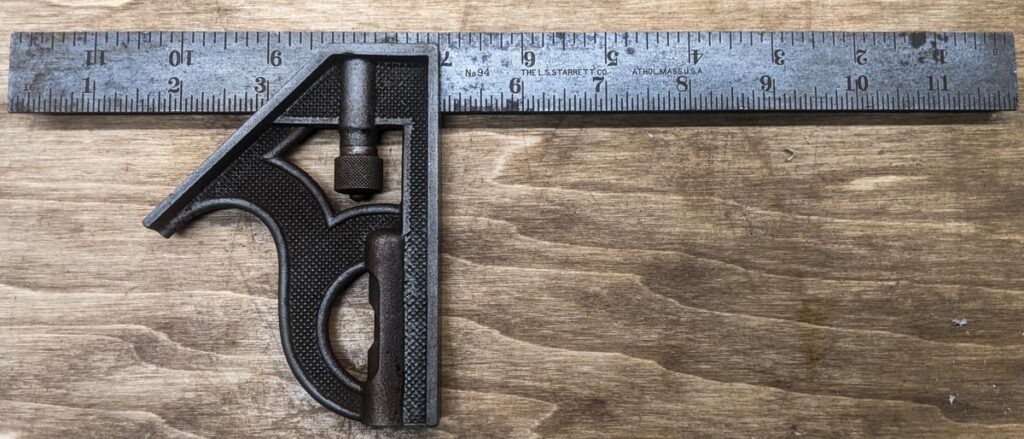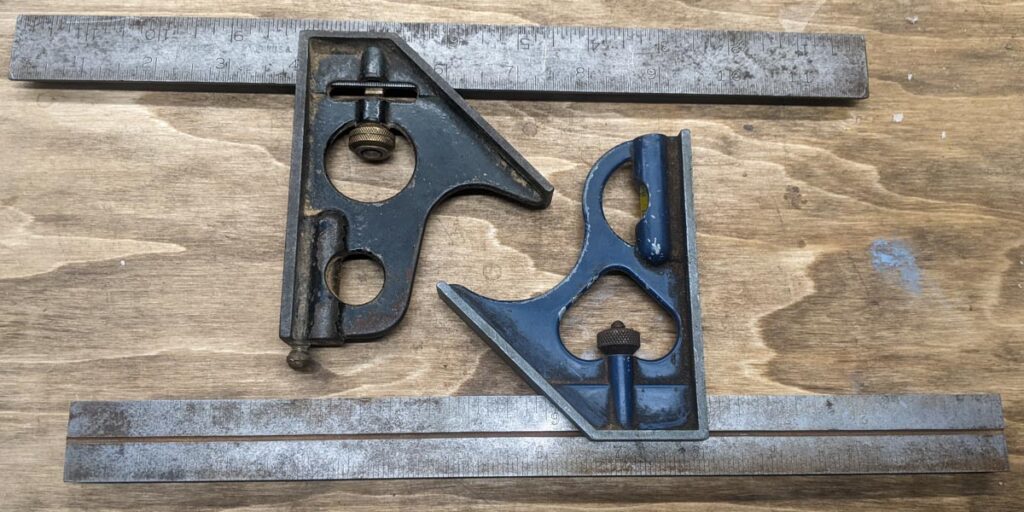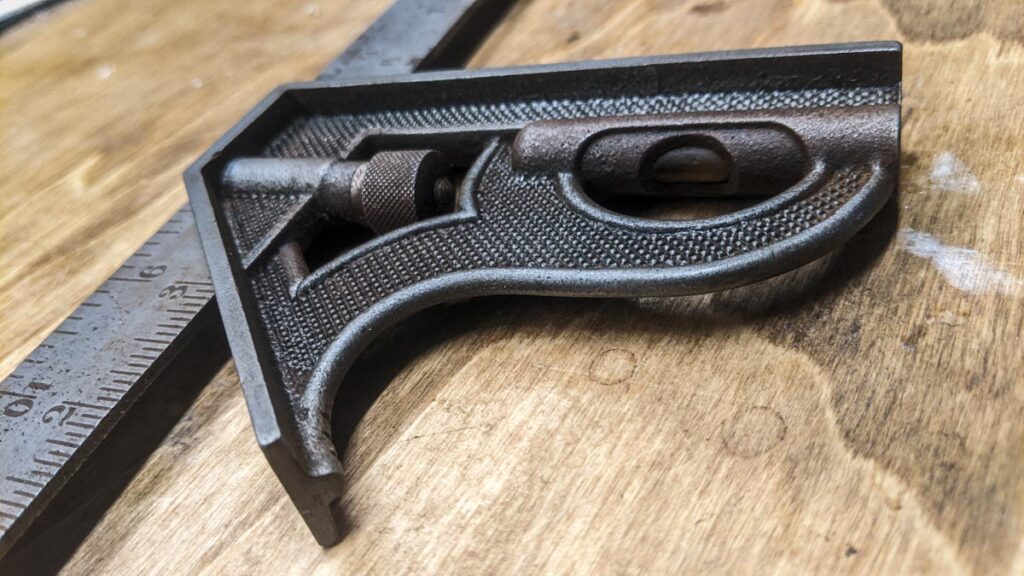The vintage combination square. Often overlooked, definitely undervalued. Vintage squares can bring a high level of accuracy and quality to your shop, and into your projects!
Accuracy is important when you are working in your garage shop. Quality measuring and layout tools can be expensive. Luckily for us, garage and estate sales are a gold mine of quality vintage tools. My favorite thing to look for is a vintage combination square. They can be pretty easily found because they don’t get the attention that big shop tools and power tools get. Squares and other hand tools are often overlooked and passed by.
What is a combination Square?
A combination square is a measuring and layout tool composed of a head and a rule. The rule slides into the head, and you can slide the head to your desired measurement on the rule. Then you can lock your measurement in with a thumb screw on the head. Locking your measurement in allows for repeatable measurements across your project quickly and easily. A standard combination square head allows for 90 and 45 degree angles. Often a vintage combination square will have a bubble level built into the head.
Why is a vintage combination square better than a new one?
To get a quality, new, 12 inch combination square you would need to spend about $100.00. Cheap combination squares lack quality, consistency, and may even be slightly out of square. However, If you keep your eyes peeled at garage and estate sales, you can find a great price on a high quality vintage combination square for next to nothing.
For example, I picked up a USA made Starrett No. 94, 12 inch combination square for $2.00 at a garage sale. This vintage combination square has a heavy cast head with a level built in, and has fantastic checking within the head. It needed to be cleaned up a bit, but for a couple bucks it was worth it and only took an hour. A similar, current production Starrett combination square starts at $95.00. Starrett is known for producing quality measuring tools, and its founder actually invented the combination square in the late 1800’s.

Another vintage combination square I have found is an older USA made Stanley square. It isn’t quite as nice as the Starrett, but I only paid $1 for it. It is a model 122. The head is smooth, it doesn’t have the nice checking that the Starrett has, but it is heavy and solid. It also has a building in level, and a rather interesting locking system compared to my other squares. One feature it has that the Starrett No. 94 doesn’t have is a built in steel scribe that slides in the bottom of the head.

What to Look For When Buying a Vintage Combination Square?
There are some things you should look for when buying a vintage combination square at a garage or estate sale. It is important to make sure the square is accurate and doesn’t have any damage that will prevent it from making precision marks on your workpieces.
-
-
- Make sure the faces of the head are smooth. It is ok if there are minor scratches or marring, but make sure there are no raised areas.
- Look at the head and make sure all of the important pieces are there. Ensure the locking thumb screw is there, and examine the bubble level if the head has (or had) one.
- Inspect the rule and ensure it isn’t bent or bowed. A curved rule will prevent easy use, and will make getting things square more difficult.
- Look for USA or German made vintage combination squares.
- Examine the edges of the rule for dents, dings, or any other deformities. Not all damage is a deal breaker. Just make sure that you can get accurate measurements, straight lines, and that the square is still square.
-
Pieces or parts like a scribe or bubble level may have gotten broken or be missing entirely; a vintage combination square can be 50 or more years old after all! These items don’t keep the square from functioning, and it is up to you to decide if you want to purchase it without those or not.
I have a USA made Craftsman combination square that is missing it’s scribe. I normally use a pencil or marker to layout marks on my projects, and this square was also only $1, so I bought it anyway. My favorite Starrett square wasn’t even made with one to begin with!
Conclusion
Even the vintage combination square you find is missing a piece, they are often cheap enough to be worth buying as an extra, or to use until you find a nicer or better one. It will be hard for me to top the Starrett No 94 I have found, however I am still always looking for them.
I like having a square within arms reach of my main work areas. I keep one at my work bench, by my used drill press, and at my miter saw station. Buying vintage squares allows me to spend very little to have nice measuring tools all around my garage shop.
In addition to their utility, a vintage combination square has a feeling of quality and uniqueness that I just enjoy using and looking at. They look great hanging on a wall above your bench (or maybe even in a shadow box in the living room). Knowing that my vintage squares have most likely aided in the construction of dozens of amazing builds brings me pride of ownership, and a desire to do my best in my projects to continue their stories.

